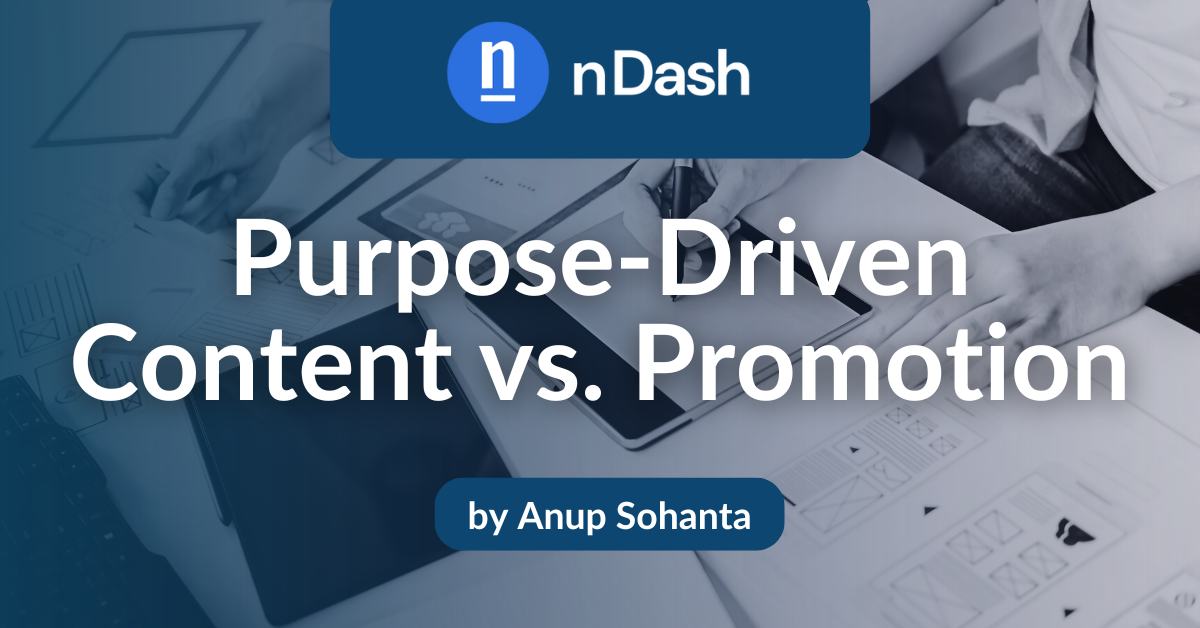Maintaining a strong content strategy is key to engaging audiences and staying relevant in a competitive market. Personal branding and trendspotting were once the foundation of many successful content marketing campaigns. However, audiences now seek deeper connections with the content they consume and the brands behind it. Purpose-driven content plays a crucial role in this shift, as consumers gravitate toward brands that align with their values and demonstrate authenticity.
Why Purpose-Driven Content is the Key to Authentic Customer Connections
Self-promotion and latching onto the latest trends can be fatiguing for customers. They are generic, repetitive, and self-serving. However, content marketing has reached a tipping point. Audiences can easily spot when a brand is manufacturing vulnerability and feigning authenticity.
Data from Kantar Consulting shows that businesses with a strong purpose increased their value by 175%. These findings highlight that customers favor connecting with brands that display authenticity and purpose. In this post, you’ll learn about purpose-driven marketing. When creating content with purpose and authenticity, you can build customer relationships based on trust.
Why is Self Promotion Out?
Self-promotion primarily focuses on highlighting product features and benefits. It also involves leveraging your personal brand, identity, and reputation to connect with your audience. However, the personal brand strategy has become standardized and bland, lacking a compelling narrative to drive a genuine connection with your audience.
According to Hootsuite, 34% of audiences on social media develop negative feelings towards brands that excessively self-promote. The effectiveness of self-promotion is decreasing with audiences, as customers want more than what a product can do or a business’s offerings. What’s the solution? Purpose—it signifies that a company has a calling beyond profits.
What is Purpose-Driven Content in Marketing?
Purpose-driven content centers around a brand’s mission and the positive impact it can have on the industry, society, and its customers. Companies with purpose at the core tend to focus on solving problems and driving change. For example, sustainability and a commitment to social responsibility are part of Patagonia’s mission to “save our home planet.”
Creating an ethos of purpose that runs through your company and personal brand is how you can be authentic to your audience. Your purpose isn’t about following a trend or optimizing messaging for the most engagement. Sharing your purpose focuses on what needs to be said and why the audience needs to hear it.
How to Create Purpose-Driven Content
A 2023 survey about consumer brands and habits found that 80% of Millennial and Gen Z respondents base their purchasing decisions on the brand’s mission or purpose. Purpose-driven content can be effective for long-term brand recognition and loyalty.
Understand Your Brand
One impactful way to create purpose-driven content is to share your story, the origin story of your previous challenges, and how you overcame them to become a strong leader or entrepreneur.
Discovering your story involves answering these questions:
- What problems did I encounter, did I solve them?
- What opportunities for growth were I presented with?
- Who am I creating change for?
- How will I shape the future of the industry?
Make it Personal
Appealing to your consumers’ emotions makes your content more memorable. Convey your purpose meaningfully and impactfully, demonstrating that you’re aligned with a cause. Behind-the-scenes content, such as employee stories, can illustrate how your brand develops sustainable products or participates in volunteer work.
User Generated Content (UGC)
User Generated Content (UGC), which is created and shared by users, ties into your purpose-driven ethos. It allows customers to share genuine experiences about a brand. UGC fosters community by enabling customers to connect and share experiences with like-minded individuals. For example, customers share images or videos on social media, highlighting their efforts toward environmental change or ethically sourced products.
Closing Thoughts on Purpose-Driven Content and Intent
Self-promotion has been the go-to strategy for years, focusing solely on product features, services, and benefits. Consumers can smell when brands are fake from a mile away, and optimizing content purely for engagement can have a detrimental effect on brand loyalty.
A brand with a purpose is the evolution of personal branding. It has substance and meaning behind its actions. Customers want to purchase from brands that stand for more than just their bottom line.
Want to scale your purpose-driven content to inform and build genuine connections with your audience? Download our eBook, An Enterprise Marketer’s Guide to Scaling Content in 2025 to discover your perfect strategy.
 About the author:
About the author:
Anup Sohanta is a freelance writer and poet who specializes in developing content and content strategies across multiple channels to drive engagement and positive growth. Check out his profile to learn more about what he can do for you today!
